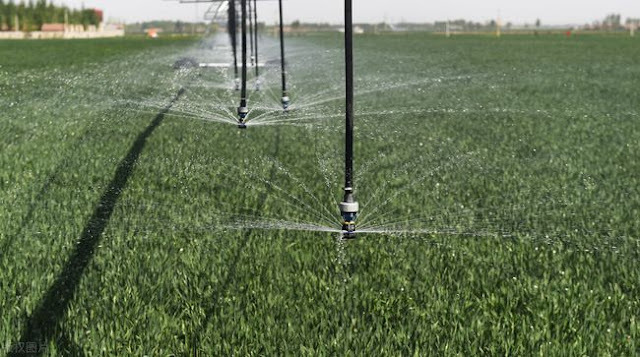Characteristics of micro sprinkler irrigation
Micro sprinkler irrigation is usually referred to as micro sprinkler irrigation. It is a form of micro irrigation that uses micro sprinkler to spray pressure water and soluble chemical fertilizer or chemicals on the fire ground of crop branches and leaves with micro flow.
The difference between micro sprinkler irrigation and drip irrigation is that the emitter has a dripper (drip irrigation belt) instead of a micro nozzle. The dripper consumes the residual pressure of the water supply pipe by its own structure, while the micro nozzle consumes energy by spraying.
Advantages of micro sprinkler irrigation:
1. Good water saving effect. Micro sprinkler irrigation uses pipeline water delivery for irrigation, which can transport water to the root of crops for local sprinkler irrigation, reducing evaporation loss and water loss in the process of water delivery, and reducing the ineffective water consumption of soil.
2. High irrigation quality. Micro sprinkler irrigation, such as drizzle, can not only supplement soil moisture, but also increase inter plant humidity, adjust ambient temperature and improve field microclimate; In the dry, high-temperature and wet season, the use of appropriate micro sprinkler irrigation can increase the humidity among crops, so as to slow down or eliminate the "nap" phenomenon that high temperature and low humidity inhibit crop photosynthesis and promote the normal growth of crops.
3. Good anti blocking performance. The outlet hole and water flow velocity of the micro nozzle are greater than the flow velocity and flow of the emitter in the drip irrigation system. In contrast, the possibility of blockage of the micro nozzle is greatly reduced, the requirements for water quality filtration are low, and the cost of filtration and other supporting equipment in the irrigation system is relatively reduced.
4. Wide application range. Micro sprinkler irrigation system can realize the co application of water and fertilizer, and can directly spray soluble chemical fertilizer or drugs into the soil around crop leaves or roots with irrigation water, which improves the efficiency of fertilization and spraying and saves the dosage. In addition to being used as irrigation equipment, micro sprinkler irrigation can also be widely used in cooling, dust removal, frost prevention, regulating field microclimate, artificial landscaping and many other aspects.
5. Convenient management and high labor efficiency. Micro sprinkler irrigation can generally save a series of surface operations such as field leveling, ditching and border construction. It does not need to enter the field manually during irrigation, and it is also convenient to implement automatic management of irrigation. It has high labor efficiency and convenient management operation.
Disadvantages of micro sprinkler irrigation
1. High investment. The working pressure and flow of micro sprinkler irrigation are large, so more investment is needed in water source equipment, head equipment and pipeline system.
2. The way of use is limited. After spraying on the leaf surface of micro sprinkler irrigation, impurities in water often deposit on the plant surface, affecting the beauty; In the semi closed environment of greenhouse planting, micro sprinkler irrigation may make the indoor humidity too high and increase crop diseases.
3. High requirements for water source. In order to keep the leaf surface of crops clean, clean irrigation water must be used, especially when hard water source is used, the water source must be strictly purified, filtered or even softened before it can be used in micro sprinkler irrigation system.
It should be noted that since the greenhouse and plastic greenhouse are a relatively closed production environment, relying entirely on the micro sprinkler irrigation system for the irrigation of greenhouse crops, it is easy to make the indoor air humidity too high in the low-temperature supermarket season, which may increase the chance of crop diseases; In addition, open water irrigation is also taboo during flowering or fruit setting of some greenhouse crops, so the use of micro sprinkler system in greenhouse should be limited. Micro sprinkler irrigation can be used for seedling raising and leafy vegetables in greenhouse; For fruit and vegetable crops and flowers, micro sprinkler irrigation system is usually combined with drip irrigation or pipe irrigation system. Drip irrigation or pipe irrigation is the main irrigation method, and micro sprinkler irrigation is used as supplementary irrigation.



Comments
Post a Comment